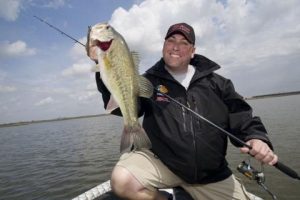Braided fishing lines like PowerPro and Berkley FireLine are popular choices among anglers due to their strength, sensitivity, and unique physical characteristics. Initially, many experienced anglers were skeptical about using braid over traditional monofilament lines, but over time, its advantages have become clear. Here are some useful tips for getting the most out of braided line on the water.
Key Differences of Braided Fishing Line
Braided fishing line differs significantly from traditional monofilament in its composition and functionality. It is typically thinner in diameter, has minimal stretch, feels softer, and is more visible underwater. These differences aren’t inherently positive or negative; they simply require some adjustments to capitalize on braid’s unique benefits while avoiding potential issues.
Thin Diameter and Handling Challenges
With a much thinner diameter than monofilament, braided line allows for greater line strength without added bulk. For example, a 20-pound test braided line has the diameter of a 6-pound monofilament, allowing anglers to increase strength without increasing visibility. However, ultra-thin braid can be challenging to handle. Lightweight lines, such as 10-pound braid, may resist water well but can be tricky to manage, forming knots or wrapping around rod guides. Using braid with at least a 20-pound test on spinning gear and 30-pound on casting gear helps avoid these tangles.
Adjusting to Minimal Stretch
Braid’s lack of stretch enhances sensitivity, making it easier to detect subtle strikes. However, it also increases the chance that fish will feel resistance, potentially causing them to drop the bait. Adjusting gear to accommodate braid’s sensitivity is crucial: pairing braid with a softer-tipped rod helps balance this by adding a bit of give. Setting a looser drag can prevent hooks from tearing through, especially on long casts where there’s less forgiveness than with monofilament.

Visibility and Using Leaders
Braided line’s visibility can be a disadvantage in clear water, so adding a leader is a common practice. A short leader of monofilament or fluorocarbon, around 2-3 feet, is generally sufficient. Knots such as the triple surgeon’s knot or back-to-back uni-knots connect the leader to the braid effectively. In murky water or dense cover, tying the braid directly to the hook or lure with a Palomar knot can be effective. However, avoid knots like the improved clinch knot, as they may slip on braided line’s slick surface.
Spooling Tips for Braided Line
Braided line requires careful spooling, as it doesn’t pack as tightly as monofilament due to its lack of stretch. Laying down a few layers of monofilament backing on the spool helps secure braid tightly and reduce slippage. Since braid can be costly, use enough nylon backing on large spools to leave space for 100-125 yards of braid to save on line while still benefiting from braid’s performance.
During the initial outing, freshly spooled braid may require a “break-in” period. Check for loops or knots that may form during early casts, and give the line an hour or so to settle on the reel. This step can help braid handle smoothly during future use.
Cutting and Handling Braided Line
Cutting braided line with regular clippers is often ineffective and leaves a frayed end. Specialized scissors, like Bass Pro Shops’ Braid Line Scissors, produce a clean cut, making retying easier and avoiding feathered ends that can weaken knots. Braided line is resilient but should be regularly inspected for wear, as casting can weaken knots and may eventually lead to breaks if unchecked.
Reducing Snarls and Snags
Braided line’s durability is beneficial for fishing in heavy cover, but it can snag or develop snarls if not handled correctly. When a small loop forms, it can often be cleared before it tightens into a knot by gently picking it out. If a loop appears within the reel spool, avoid pulling loops off the top, which often worsens tangling. Instead, back off the drag and strip line while rotating the spool, similar to stripping line off a fly reel, then tighten the drag afterward.
With these tips, anglers can maximize the benefits of braided fishing line and enjoy its strengths on the water. Proper handling and adjustments make it a reliable, long-lasting choice that enhances the fishing experience.
Image/Source: BassPro





